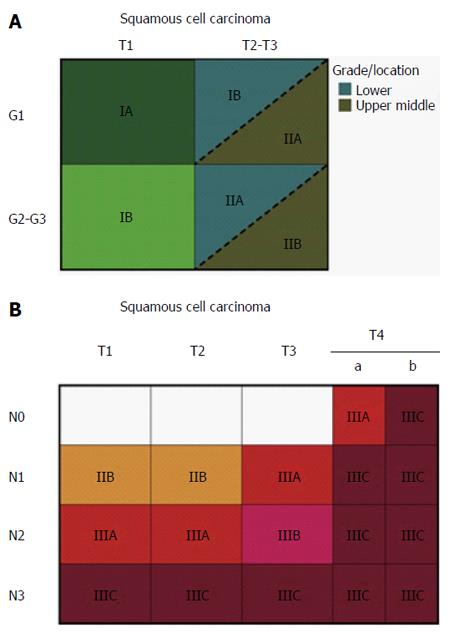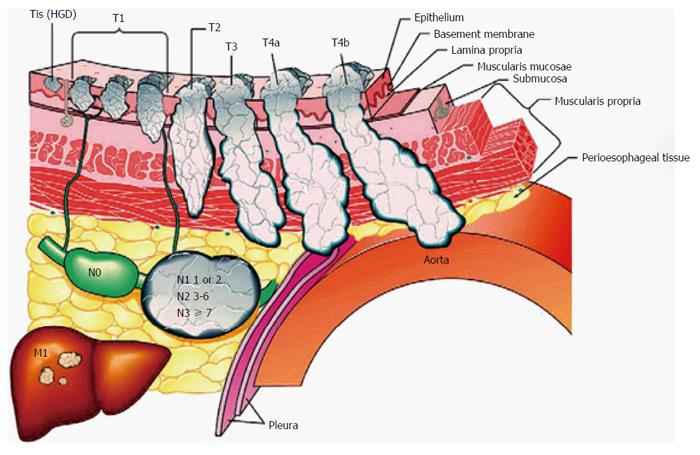Copyright
©The Author(s) 2016.
World J Gastroenterol. Aug 7, 2016; 22(29): 6683-6689
Published online Aug 7, 2016. doi: 10.3748/wjg.v22.i29.6683
Published online Aug 7, 2016. doi: 10.3748/wjg.v22.i29.6683
Figure 1 Stage groupings for M0 esophageal squamous cell carcinoma[10].
A: Stage groupings for T1N0M0 and T2-3N0M0 esophageal squamous cell carcinoma (ESCC) by histologic grade (G) and cancer location; B: Stage groupings for all other M0 ESCCs. M1 stage is grouped as IV, regardless of tumor depth, nodal status or tumor location.
Figure 2 Features used to stage esophageal squamous cell carcinoma according to the latest version of the TNM classification system[10].
*Tis = intraepithelial neoplasia. T1: cancer invades lamina propria, muscularis mucosa, or submucosa; T2: cancer invades muscularis propria; T3: cancer invades adventitia; T4a: resectable cancer invades adjacent structures, such as pleura, pericardium, or diaphragm; and T4b; unresectable cancer invades other adjacent structures, such as aorta, vertebral body, or trachea. N is classified as N0: no regional lymph node metastasis; N1: regional lymph node metastases involving 1 to 2 nodes; N2: regional lymph node metastases involving 3 to 6 nodes; and N3: regional lymph node metastases involving 7 or more nodes. M is classified as M0: no distant metastasis; and M1: distant metastasis. HGD: High-grade dysplasia.
- Citation: Luo LN, He LJ, Gao XY, Huang XX, Shan HB, Luo GY, Li Y, Lin SY, Wang GB, Zhang R, Xu GL, Li JJ. Evaluation of preoperative staging for esophageal squamous cell carcinoma. World J Gastroenterol 2016; 22(29): 6683-6689
- URL: https://www.wjgnet.com/1007-9327/full/v22/i29/6683.htm
- DOI: https://dx.doi.org/10.3748/wjg.v22.i29.6683










